Aquifer Storage and Recovery
Aquifer Storage and Recovery (ASR) is an innovative approach that combines management and technology to protect and optimize freshwater resources. In coastal areas, decentralized ASR can be implemented to combat seawater intrusion and groundwater over-abstraction. ASR configurations leverage the subsurface storage potential, featuring advanced well designs and management techniques to efficiently control freshwater resources. These solutions are adaptable to changing environmental and socio-economic conditions.
The Key Objectives are:
- Mitigation of seawater intrusion
- Addressing over-abstraction and water quality challenges in coastal regions
- Enhancement of resilience in coastal areas
ASR schemes to prevent saltwater intrusion in coastal areas
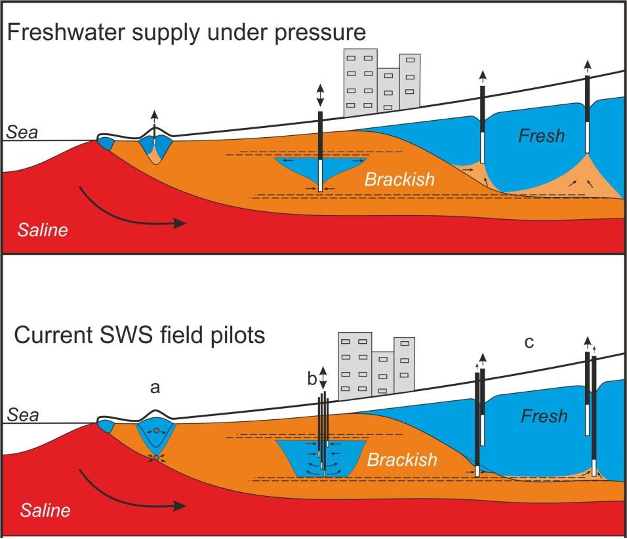
ASR application in Schinias, Marathon, Attica
In Schinias, eastern Attica, an Aquifer Storage and Recovery (ARS) system has been installed, tested and optimised. This system integrates novel pollution remediation techniques, such as Reverse Osmosis (RO) and Advanced Oxidation Methods (AOPs), to utilize deeper groundwater from karstic coastal aquifers, treat brackish water, and recharge coastal aquifers, addressing the common Mediterranean issue of saltwater intrusion.
The ASR hybrid system combines ASR-Coastal and Freshmaker technologies and includes three main components:
- Water supply installations that abstract and transfer the karstic water from Makaria springs to the treatment unit (about 1700m)
- AOP-RO hybrid water treatment plant to produce water for recharging the upper alluvial aquifer
- An artificial recharge site with four wells (three vertical and one horizontal) to combat saltwater intrusion and improve groundwater quality.
Layout of ASR application in Schinias, Marathon, Attica
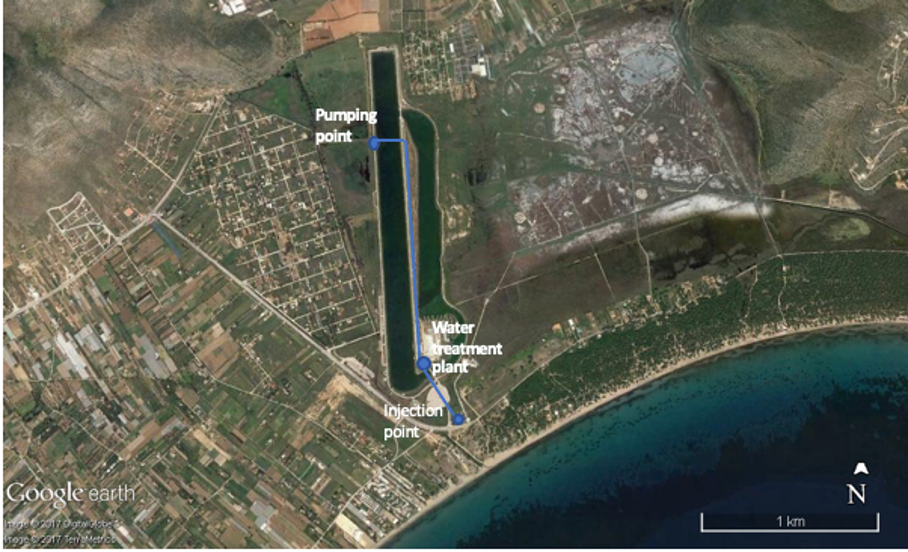
Schinias Rowing Center site
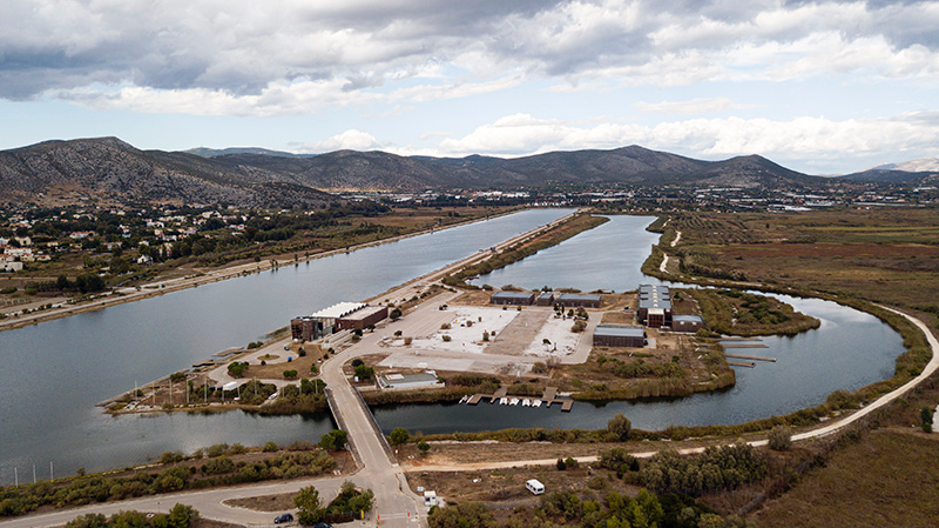
ASR hybrid system process
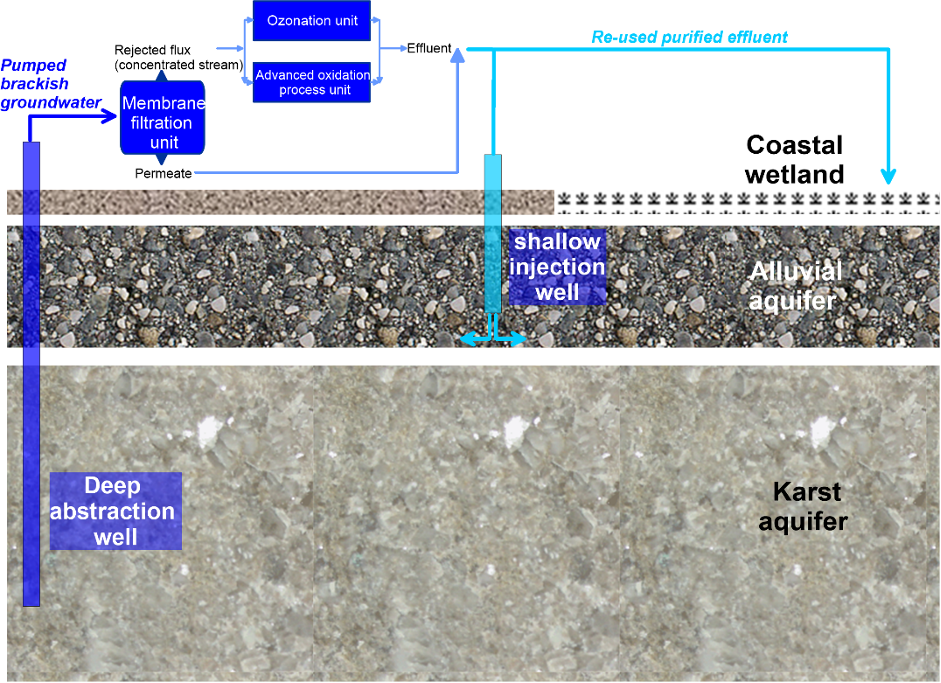
Operating conditions - Performance data
The testing and optimisation of the treatment unit, operated during the period 2015-2018, and have led to the following summary with parameters of raw and produced water, as shown in the table below.
|
Parameter |
Values |
Units |
|
|
Conductivity of raw water (average) |
4400 (average) |
μS/cm |
|
|
|
(typical) |
(extreme) |
|
|
Feed water Temperature |
25 |
46 |
°C |
|
Conductivity of product water |
167 |
309 |
μS/cm |
|
Product water flow rate |
2.5 |
2.4 |
m3/h |
|
Pressure RO membranes |
8.9 |
6.5 |
bar |
|
TOC of raw water (average) |
2.2 |
ppm |
|
|
TOC of product water (average) |
0.2 |
ppm |
|
AOP-RO hybrid water treatment equipment (1/2)
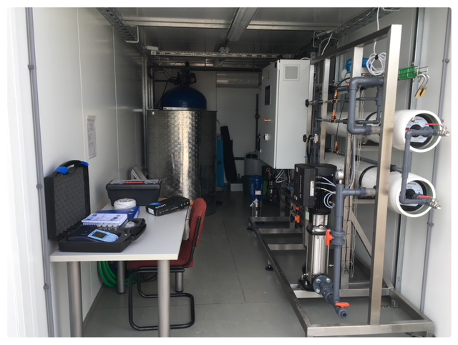
AOP-RO hybrid water treatment equipment (2/2)
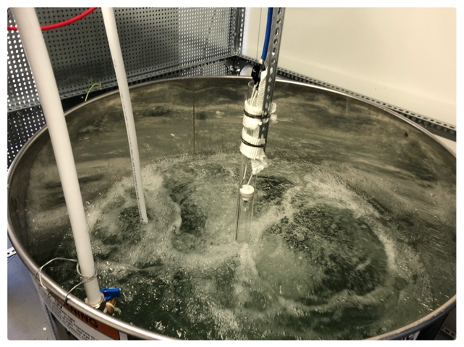
Conclusion points
- Site selection: Conducted through comprehensive surveys (hydrogeological, archaeological and geoelectrical surveys) and targeted measurements (e.g. infiltration tests).
- RO unit design: Karstic water conductivity ranged from 4200 - 4600 μS/cm, while the produced water ranged from 167 - 309 μS/cm. The RO unit output is 60 m3/day.
- AOP-RO unit necessity: AOP treatment before RO ensures effective degradation and remediation of organic pollutants.
- Recharge water quality: Recharge rate could reach 6m3/h, mixing one part of osmotic and two parts of Makaria spring water, which is free of contamination.
- Recovery: Optimal recovery rate is determined via modeling based on water levels and conductivity. Water may be pumped, stored, and reused for irrigating National Park plants using existing infrastructure.
- Cost for the product water: The operational cost of the unit is estimated to be 1.80 €/m3 of produced water.
Lessons Learned
ASR configurations are promising solutions as they:
- are tested to be suitable in real world environments
- are proven to be autonomous, flexible and decentralised resource recovery systems
- can be upscaled and form a blueprint for wider replication in similar coastal environments
- can produce quality water to be reused in water scarce areas supporting protection, environmental regeneration and enhancing the resilience of an area.
SUBSOL has received funding from the European Union's Horizon 2020 research and innovation programme under grant agreement No 642228
Notice
Page is Under Construction
Notice
Page is Under Construction
Notice
Page is Under Construction
Notice
Page is Under Construction
